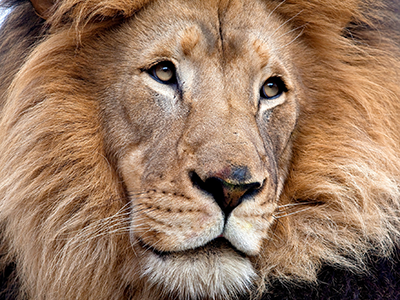 |
Emergency Animal Recall - Brown Bears |
2.00 |
Welcome to Emergency Animal Recall. This collection consists of an overview course which covers the fundamentals of Emergency Recall training for exhibit animals, including:
What exactly is Emergency Animal Recall, and why is it necessary?
What are the benefits of Emergency Animal Recall?
How do you generate support within your organization for a training program, and how do you decide which animals should be trained first?
What equipment will you need, and what preparations will you need to make?
What is the general outline of an Emergency Recall training program, and how do you maintain the conditioning once it has been established?
After completing this Overview, you can continue with the species-specific Brown Bear Emergency Animal Recall course. |
 |
Emergency Animal Recall - Lions |
2.00 |
Welcome to Emergency Animal Recall. This collection consists of an overview course which covers the fundamentals of Emergency Recall training for exhibit animals, including:
What exactly is Emergency Animal Recall, and why is it necessary?
What are the benefits of Emergency Animal Recall?
How do you generate support within your organization for a training program, and how do you decide which animals should be trained first?
What equipment will you need, and what preparations will you need to make?
What is the general outline of an Emergency Recall training program, and how do you maintain the conditioning once it has been established?
After completing this Overview, you can continue with the species-specific Lions Emergency Animal Recall course. |
 |
Emergency Animal Recall - Tigers |
2.00 |
Welcome to Emergency Animal Recall. This collection consists of an overview course which covers the fundamentals of Emergency Recall training for exhibit animals, including:
What exactly is Emergency Animal Recall, and why is it necessary?
What are the benefits of Emergency Animal Recall?
How do you generate support within your organization for a training program, and how do you decide which animals should be trained first?
What equipment will you need, and what preparations will you need to make?
What is the general outline of an Emergency Recall training program, and how do you maintain the conditioning once it has been established?
After completing this Overview, you can continue with the species-specific Tigers Emergency Animal Recall course. |
 |
Emergency Animal Recall - Gorillas |
2.00 |
Welcome to Emergency Animal Recall. This collection consists of an overview course which covers the fundamentals of Emergency Recall training for exhibit animals, including:
What exactly is Emergency Animal Recall, and why is it necessary?
What are the benefits of Emergency Animal Recall?
How do you generate support within your organization for a training program, and how do you decide which animals should be trained first?
What equipment will you need, and what preparations will you need to make?
What is the general outline of an Emergency Recall training program, and how do you maintain the conditioning once it has been established?
After completing this Overview, you can continue with the species-specific Gorillas Emergency Animal Recall course.
|
 |
Ending Extinction: The Basics - Module 1 |
2.50 |
The goal of this course is to lead the fight against extinction by taking a leadership role and collaborating with others to save species from extinction using science-based techniques and fostering collaboration and cooperation. |
 |
Ending Extinction: The Basics - Module 2 |
2.50 |
The goal of this course is to lead the fight against extinction by taking a leadership role and collaborating with others to save species from extinction using science-based techniques and fostering collaboration and cooperation. |
 |
Plant Conservation |
2.50 |
The goal of this course is to lead the fight against extinction by taking a leadership role and collaborating with others to save species from extinction using science-based techniques and fostering collaboration and cooperation. |
 |
Interpretation Basics: Module III Storytelling |
2.50 |
If you've successfully completed Interpretation Basics: Modules I and II, you can further develop your interpretive skills by completing the third module in the series: Interpretation Basics III: Storytelling. A well-told story is the most powerful way to connect visitors to your organization's mission and inspire conservation action. The skills presented in this course will help you select, develop, and deliver message-driven stories that are compelling, enjoyable, meaningful, and memorable. |
 |
Great Apes |
3.00 |
This collection of 3 courses explores the natural history and conservation of the great apes and covers a bit about primates and how the apes fit into this larger group of animals. |
 |
Introducing Monotremes |
3.00 |
Are monotremes a bit of mystery to you? Get to know the echidnas and the platypus, as Monotremes 1 explores the physical characteristics, distribution, and habitats of echidnas and platypuses. In Monotremes 2, learners investigate what—and how—monotremes eat, as well as which animals prey on them, and how they avoid being eaten. This module also covers thermoregulation, locomotion, behavior, and social structure. The third and final course in the series, Monotremes 3, explores the fascinating world of monotreme reproduction and investigates the conservation status of monotremes, threats to platypus and echidna species, and how conservationists are helping. The module concludes with a look at some examples of how we can all participate in conservation. Remarkable images show platypuses and echidnas in ways you’ve never seen before, and video provides insights into their behavior. Interactivity sprinkled throughout the modules engages participants in the learning process, and questions at the end of each section ensure that they have mastered fundamental concepts before they move on. |











